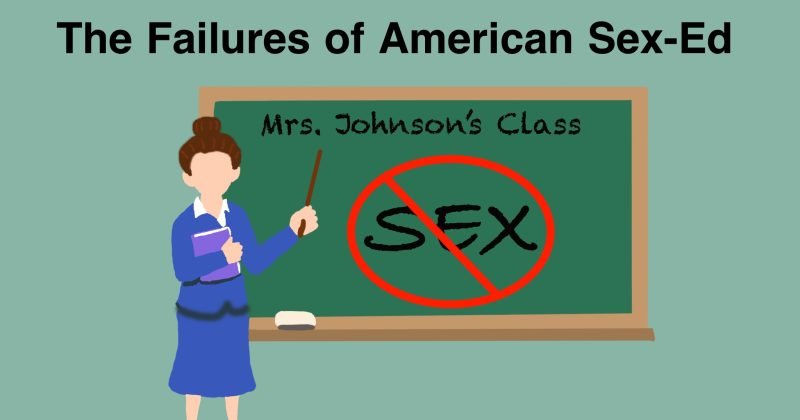In a time when only 13 states in the United States require sex-related education to be accurate in a medical sense and accurate, there is a lot open to interpretation when it comes to the realm of health literacy among teens. Indicates that when sexual education is thorough, teens are more educated and make better choices, and are more likely to have better outcomesleading to less unplanned pregnancy and greater protection from sexually transmitted illnesses and infections.
“Sex education is about life skills,” said Elizabeth Nash, interim director of state affairs of the Guttmacher Institute. There are so many aspects you take with you for the rest of your life, but you only get it once or twice in school.”
Of course, a lot of young students get Sexual health info from other sources beyond school: parents or colleagues medical experts, social media, as well as pop-culture. But public schools are the best place for teens to gain access to formal information. What happens when this information isn’t managed by the government? Teachers are left to interpret the vague laws, which means that data may not be completely accurate or impartial.
State-by-State Sex Education Policies
The following chart compares the legislative practices of the 50 states, which includes how they require specific aspects of sexual education, such as abstinence, contraception and sexual orientation.
The image alt=”Sex laws on education passed by states.”
Though only about half of the states in the U.S. require sex education however, fewer states also have laws that require medical accuracy, inclusive language and details about contraception. Visit a tabular Version of Sex Ed Legislation in the United States.
What Does Comprehensive Sex Ed Look Like?

While sex education is mandatory, the state’s policies differ widely in the provision of essential information. In short, comprehensive sexual education programs contain “developmentally and culturally responsive, science-based and medically accurate information on a broad set of topics related to sexuality, including human development, relationships, personal skills, sexual health and society and culture,” according to the Sexuality Information and Education Council of the United States.
USC Suzanne Dworak-Peck School of Social Work, Department of Nursing Professor Dr. Theresa Granger says that sexual education that is comprehensive goes far beyond biophysical factors.
“It’s about focusing on the emotional, psychosocial and economic impacts of what happens when youth and adolescents engage in sexual intercourse and other sexual practices,” she added.
Granger stated that for a program to be inclusive, sex education programs must take into account the entire student. However, many states leave issues such as sexual orientation and contraception not addressed, and a few make it illegal for public schools to address the issues.
“It’s hard to get legislators behind comprehensive sex ed,” Nash explained. Nash who explained that a campaign on sensitive and controversial topics could cause lawmakers to be uncomfortable.
It could take years for laws to be changed and for even the states with the highest levels of progress. California is a well-known pioneer in reforms however it wasn’t until 2016 when California adopted an act that mandated the inclusion of sex education throughout schools that are public schools. Before the new law came into effect in January of this year, California left sex education as an option in the health curriculum for students from the grades 7-12.
The law is part of a larger trend, albeit it is a slow, deliberate one that aims to change the laws that are ambiguous in sex education into comprehensive rules which will improve quality of life for children in public schools, according to Nash who has been following policies on sex education for more than 10 years.
The other states, however, have more turbulent experience in regulating the sex education. In 2010, the governor of Wisconsin and legislature enacted a law requiring the full sex education. Two years after, the law was repealed in Wisconsin’s current abstinence-based policy.
In recent time, states have begun to require that sex education include information on learning the life skills needed for communication with family members in order to avoid coercion and make sensible choices. According to Nash that the inclusion of these abilities is a trend that is growing all across the United States, and states have started to require discussion of the sexuality of consent and harassment, and sexual orientation. The majority of tendencies aren’t changing quickly.
“Most states will tweak the policies they already have to be more inclusive or double down on conservative regulations,” Nash said.
The Health Outcomes of Comprehensive Sex Education
The impact of sex education policies is more apparent when we consider that in the year 2016 it was reported that the United States had higher levels of teenage sexually transmitted illness and pregnancy than other industrialized nations, according to research released in the Guttmacher Institute in the National Library of Medicine. What feels like progress at the state level can be seen as mere catch-up to the policies of other developed nations that require teachers to discuss sex ed as early as kindergarten.
Granger added that schools need be working on adapting to the current health concerns and trends that impact the quality of sexual health literacy.
“There are rewards and consequences to our behavior at every age across the lifespan,” she explained. “We can’t always assume that an adolescent will wait to become an adult before making adult decisions.”

